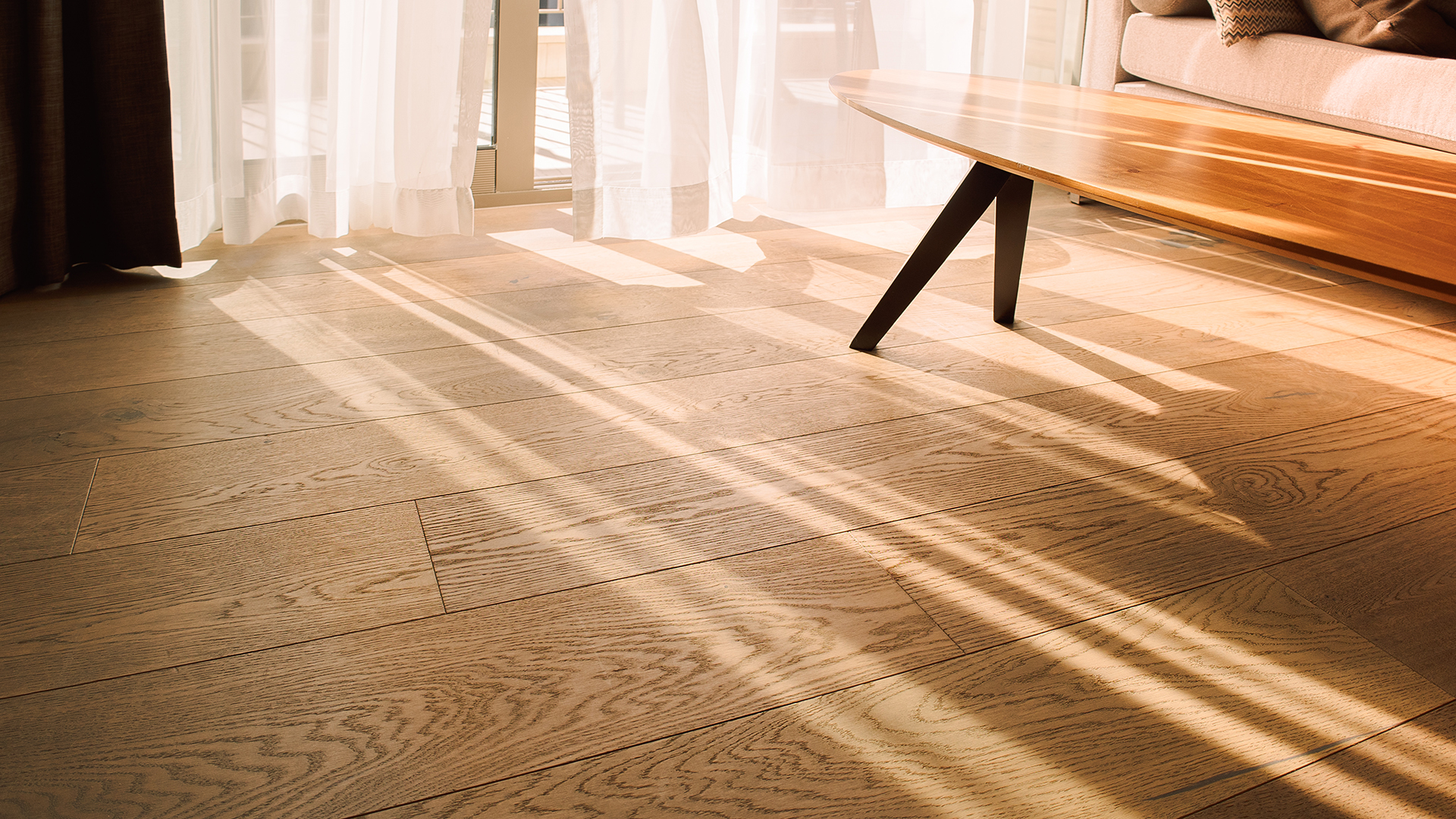What are laminate floors? We've got the answers
What are laminate floors and what are its biggest pros and cons? We investigate laminate as an alternative to hardwood.

Have you been wondering “what are laminate floors?” and if they could be right for you? Hardwood floors are a classic choice but come with upkeep and a hefty price tag. Laminate flooring has long been considered a low-budget alternative to achieving the appearance of a wood floor.
We dig into the big questions about laminate flooring, asking what are laminate floors made of, as well as understanding their installation and upkeep needs. Professional cleaner, Sally Dwyer, also gives expert advice on how the best steam mops can keep your laminate shining if they are used with the right settings.
What are laminate floors made from?
Laminate floors are usually made to mimic the appearance of wood at a fraction of the cost, but what are laminate floors actually made of? In most cases, laminate floors are made of three distinct layers:
• Bottom/core layer: The MDF (medium-density fiberboard) is the thickest layer. MDF makes for an affordable choice for a sturdy base layer.
• Middle layer: Digitally printed paper layer. Paper is printed with the chosen design, often wood grain, cork, or tile patterns.
• Top layer: Plastic composite forms the top layer. Melamine plastic is used as a thin, clear top layer that is smooth and hard wearing to prevent against scratching or staining.
Being a multi-layered synthetic flooring, laminate has a smooth surface which makes it easy to spot dirt build-up and dust bunnies.
Sign up to receive the latest news, reviews, buying guides and deals direct to your inbox
Pros of laminate floors
What are laminate floors best for? Laminate has some clear advantages that we spell out below.
• Cost
This has to be the single most significant factor in people choosing laminate flooring. While the finish may not be identical to wood or tiling, the quality of laminate has improved dramatically in recent years making it an attractive alternative flooring, usually to wood, but at a fraction of the cost.
• Easy installation and care
Laminate is a breeze to install with many people opting to install it themselves as a DIY project. By comparison, hardwood or stone flag flooring normally requires an expert to cut materials to size and install, increasing the overall price tag. Once installed, laminate is wipe-clean and won’t require re-waxing, re-staining, or re-finishing.
Cons of laminate floors
Professional cleaner, Sally Dwyer, says, "It’s so important to not over wet laminate flooring as this can cause it to warp. Vinegar and warm water are great for cleaning, but I like to add a splash of Zoflora in hot water with the mop wrung out properly. Speed mops are also great for this!”
These are the most notorious issues people find when choosing laminate flooring.
• Vulnerability to moisture
Although laminate flooring doesn’t have the same resilience to water that hardwood and stone flag flooring has, people often treat it the same e.g. washing it with a wet mop. This can cause warping and tarnishing, making it look tired and unloved.
• Can’t be refinished
Unlike hardwood floors, laminate can’t be sanded back or refinished. Once there is a mark or tarnish, it’s there to stay. There is also no way of protecting from damage with wax or lacquer like on wood. Simply put, when your laminate is damaged it’s there to stay. Although laminate floors can last for many years, they can’t last for generations like hardwood or flagstone flooring can.
How to install laminate floors
The major aspect of installing most laminate flooring is cutting the laminate down to size. This will most likely need to be done with a circular saw or a sturdy handsaw. Goggles and a safety mask are a must for this kind of work. Some hardware stores will cut the pieces for you with their in house equipment for a nominal fee. Once you have measured your area and cut your laminate to size, lay your pieces down taking care to fit the edge pieces snugly.
An emerging trend that makes laying laminate even easier is tongue and groove, which means the laminate clicks into each other and makes alignment simple. Some varieties of laminate will need to be caulked to baseboards, others nailed into flooring; make sure to check the manufacturer's instructions for your specific laminate. Underlay is usually a must for achieving an even finish. The process, while requiring precise attention to detail, is not especially technically difficult, however if in doubt contractors are readily available to lay laminate.
How do laminate floors compare to other materials?
Professional cleaner, Sally Dwyer, has experience caring for both hardwood and laminate floors. She recommends using minimal water to clean a laminate floor and keeping the heat down on a steam mop with variable heat. As laminate floors are made of multiple layers, pressed together, water can infiltrate these layers and cause damage to the inner layers which have no water resistance.
How to care for laminate floors
So, what are laminate floors like to care for? Here are our expert-approved tips for caring for laminate flooring.
• When mopping, keep moisture as low as possible. Wring your mop thoroughly or use a flash mop that uses replaceable wet-wipe style pads which are low in moisture.
• A steam mop could be a good choice for laminate as it uses highly pressurized steam. Remember, the top layer of laminate is plastic composite make sure that your heat is set to low.
• For spot cleaning a slightly damp microfiber cloth will wipe almost any spills or stains.
• Vacuum on a low suction setting or simply sweep with a brush.
Discover more guides for the home…
Best steam mops
Best robot vacuums
Best handheld vacuums
Best carpet cleaners
Tanisha started her career in commercial retail buying for one of Amazon UK’s Top 10 revenue grossing online homeware retailers. Years spent obsessing over homeware products made it an easy career switch to writing about them. Her freelance career has seen her craft customer-focused web content for brands big and small, as well as writing articles in the health, lifestyle, home and retail sectors.
- Sally DwyerProfessional Cleaner

